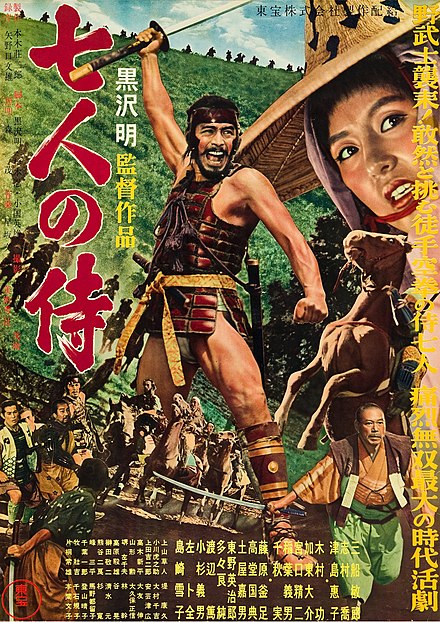
Seven Samurai
Ah, let me dive into Akira Kurosawa’s epic masterpiece about medieval gig work!
The story kicks off in 16th-century Japan, where a village of farmers discovers that bandits are planning to raid them once their harvest is ready. (Apparently, bandits in feudal Japan were considerate enough to give advance notice of their robberies.) The villagers, tired of being the medieval equivalent of a free grocery store, decide to hire samurai for protection. Their budget? Room, board, and all the rice they can eat – which, in feudal Japan’s version of a job posting, translates to “unpaid internship with meals included.”
Enter Kambei, a wise, experienced samurai who’s first seen shaving his head to rescue a kidnapped child. (If that’s not the definition of a perfect job interview, I don’t know what is.) Despite the less-than-attractive compensation package, Kambei takes pity on the villagers and agrees to help. He then starts assembling his team like it’s Ocean’s Eleven: Medieval Edition.
The recruitment process brings together a colorful crew: Katsushirō, an eager young samurai wannabe; Gorobei, who can catch arrows mid-flight (a skill that, surprisingly, does come in handy); Kyūzō, a serious master swordsman; Heihachi, the funny one who’s good with an axe; Shichirōji, Kambei’s old war buddy; and the scene-stealing Kikuchiyo (Toshiro Mifune), a wild card who’s clearly not a real samurai but makes up for it with enough energy to power a small village.
Once they reach the village, our samurai find that their job includes not just fighting bandits, but also being part-time therapists for a community with major trust issues. The farmers have hidden their women and valuables, because historically, samurai haven’t exactly been the most courteous house guests. Kikuchiyo, revealed to be a farmer’s son himself, calls out both sides for their prejudices in what must be feudal Japan’s first diversity and inclusion seminar.
While waiting for the bandits, the samurai turn the village into a fortress and train the farmers in the art of war, which goes about as well as you’d expect when teaching rice farmers to use spears. Meanwhile, young Katsushirō falls for a local farmer’s daughter, because apparently no one told him that workplace romances are complicated.
When the bandits finally attack, what follows is a series of increasingly intense battles in the rain (because Kurosawa never met a fight scene he couldn’t make more dramatic with weather). The samurai’s clever tactics and the farmers’ newfound courage turn the tide, but victory comes at a cost – four of the samurai die in the fighting, proving that even in medieval Japan, the mortality rate for temporary contract work was unreasonably high.
The film ends with the surviving samurai watching the farmers happily planting rice, leading Kambei to muse that the real winners are the villagers, while samurai just keep losing. (Though you could argue that the real losers were the bandits, who probably should have just applied for farming jobs instead.)
The whole thing serves as a poignant reminder that sometimes the best-paying jobs aren’t the most rewarding, and that if you’re going to hire security consultants, maybe offer better benefits than just rice.
In the end, “Seven Samurai” became so influential that it spawned numerous remakes, including “The Magnificent Seven,” proving that the concept of protecting villagers from bandits transcends both cultures and centuries – though the payment plans remain consistently poor.
5/5 Samurai Swords – Really just a classic movie. I love the idea of Samurai and have watched a LOT of these kind of movies (in addition to kung fu movies) such as Zatoichi and the Hidden Fortress. It’s really well acted and after a short while the subtitles became less obtrusive and and got pulled into the story. It was really well paced – the silences and ambient sounds were well placed and the on screen deaths were meaningful – hard to do character development with so many characters but Kurosawa pulled it off.